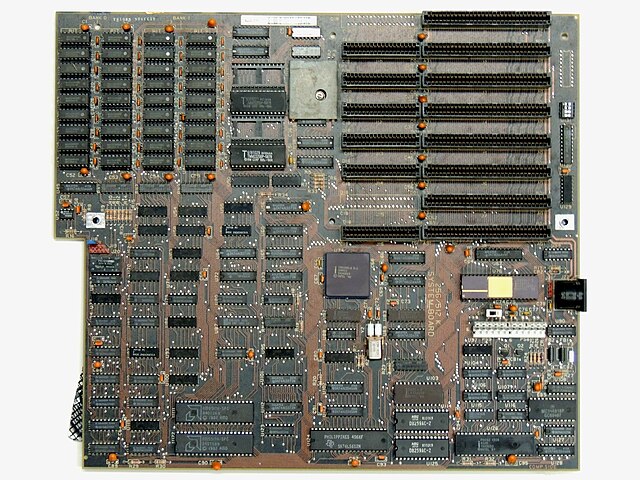ATX is a motherboard and power supply configuration specification, patented by David Dent in 1995 at Intel, to improve on previous de facto standards like the AT design. It was the first major change in desktop computer enclosure, motherboard and power supply design in many years, improving standardization and interchangeability of parts. The specification defines the dimensions; the mounting points; the I/O panel; and the power and connector interfaces among a computer case, a motherboard, and a power supply.
An ATX motherboard
Comparison of some common motherboard form factors (pen for scale)
ATX I/O plates for motherboard rear connectors
24-pin ATX motherboard power plug; pins 11, 12, 23 and 24 form a detachable separate four-pin plug, making it backward-compatible with 20-pin ATX receptacles
In the era of IBM compatible personal computers, the AT form factor comprises the dimensions and layout of the motherboard for the IBM AT. Baby AT motherboards are slightly smaller, measuring 8.5" by 13". Like the IBM PC and IBM XT models before it, many third-party manufacturers produced motherboards compatible with the IBM AT form factor, allowing end users to upgrade their computers for faster processors. The IBM AT became a widely copied design in the booming home computer market of the 1980s. IBM clones made at the time began using AT compatible designs, contributing to its popularity. In the 1990s many computers still used AT and its variants. Since 1997, the AT form factor has been largely supplanted by ATX.
IBM PC AT System Board. This is the original AT motherboard on which the form factor was based.
Keyed AT-style power connectors to prevent improper insertion.
Baby AT motherboard
An ATX Form Card, used by later Baby-AT motherboards to allow for USB, PS/2 mouse, and IR connectivity through headers








